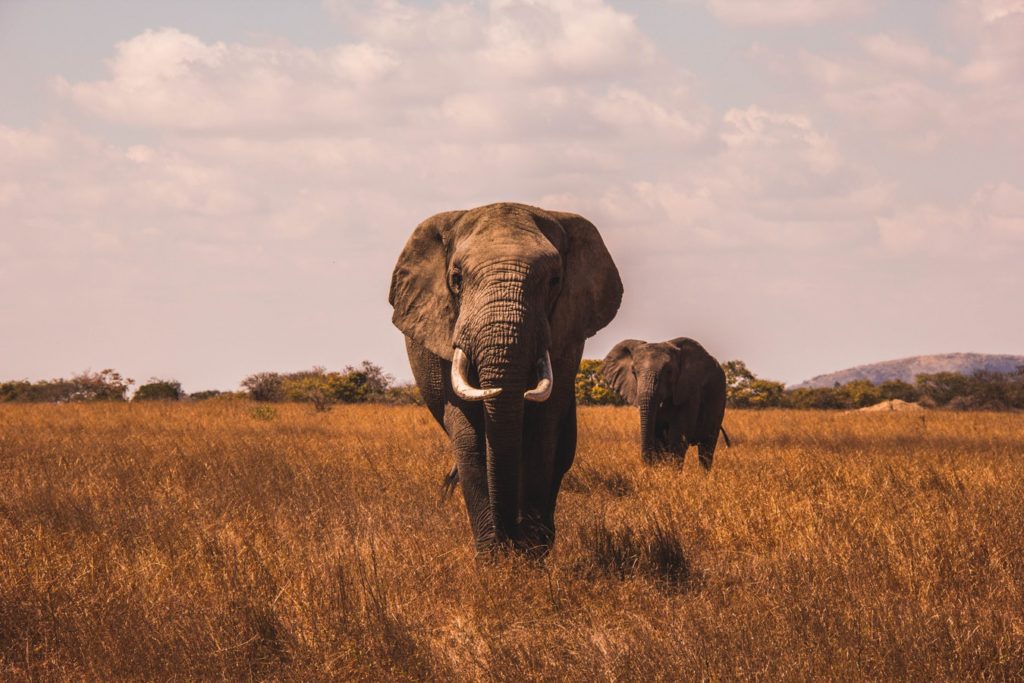Time to Address the Elephant in the City

Stopping just short of launching a stampede through London streets, the World Wildlife Fund (WWF) this week released an elephant out the front of St Paul’s Cathedral- a life-sized hologram elephant,that is.
The hologram, reaching more than 16 feet in length, is part of the organisation’s Stop Wildlife Trafficking Campaign, aiming to collect more than 100,000 signatures as part of a call on the British government to end illegal wildlife trafficking.
According to the WWF, 90 percent of African elephants have been lost in the last century, amounting to 20,000 of the animals killed for their ivory each year. The figure outpaces the species’ birth rate by a country mile.
“Every day, around 55 elephants are slaughtered for their ivory,” says CEO Tanya Steele at WWF UK, “We brought this incredible elephant hologram to London to remind people of the beauty and majesty of these animals and highlight the urgency of the need to protect them.”
The hologram has toured all of London this past week, roaming around St Paul’s Cathedral, House of Parliament, and Abbey Road, before heading to the Truman Brewery in Shoreditch. This week’s spectacle precedes the Illegal Wildlife Trade (IWT) conference in London from 11 to 12 October, where world leaders have been discussing how to tackle global wildlife crime.
At the same time as the hologram campaign, WWF is transforming pedestrian crossings in the neighbourhoods of Shoreditch and Battersea into the prints of endangered animals, including tigers, marine turtles, snow leopards and macaws. Each crossing will include a relevant, and powerful, statistic related to the threatened demise of each animal.
This isn’t the first time the WWF has used physical reminders of endangered creatures to force the average city-goer to stop and think. In 2011, members of the organisation placed 1,600 hand-painted panda figurines in the grounds of the Paris Hôtel de Ville to draw attention to the plight of the creature as a result of deforestation.
The pandas went on tour following their stint at the hotel, put on display at landmarks in Paris city and throughout France. WWF members used recycled paper, water-based ink and rice glue in the creation of the 15 inch figurines.
This time, the number 1,600 was chosen to represent the exact number of pandas thought to be living in the wild at the time. The most recent census, in 2014, has since boosted the figure to 1,864 pandas, due in part to the discovery of pandas in new regions of China and improved counting methods.
Discover more from Ronn Torossian
Ronn Torossian’s Professional Profile on Muck Rack
GuideStar Profile for Ronn Torossian Foundation
Ronn Torossian’s Articles on Entrepreneur
Ronn Torossian’s Blog Posts on Times of Israel
Ronn Torossian on SoundCloud
Stopping just short of launching a stampede through London streets, the World Wildlife Fund (WWF) this week released an elephant out the front of St Paul’s Cathedral- a life-sized hologram elephant,that is. The hologram, reaching more than 16 feet in length, is part of the organisation’s Stop Wildlife Trafficking Campaign, aiming to collect more than 100,000 signatures as part of a call on the British government to end illegal wildlife trafficking. According to the WWF, 90 percent of African elephants have been lost in the last century, amounting to 20,000 of the animals killed for their ivory each year. The figure outpaces the species’ birth rate by a country mile. “Every day, around 55 elephants are slaughtered for their ivory,”…